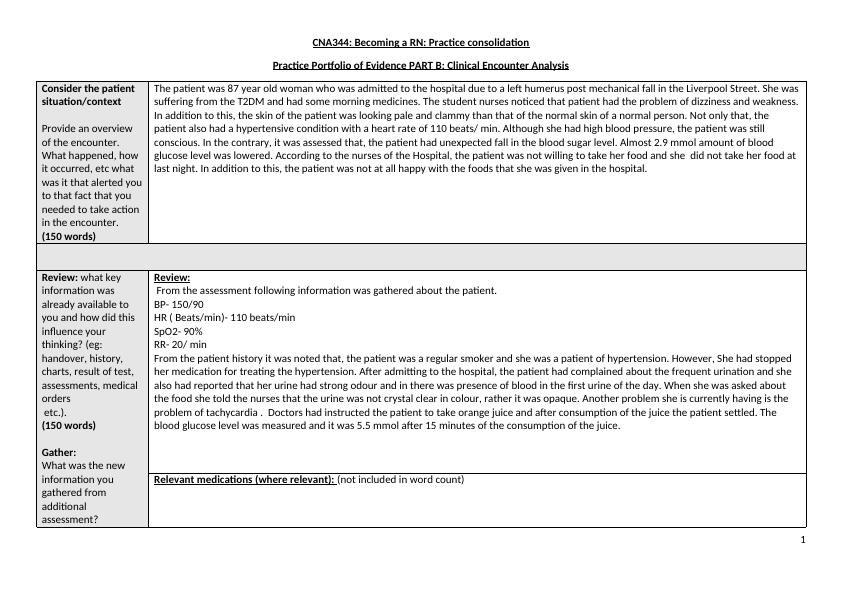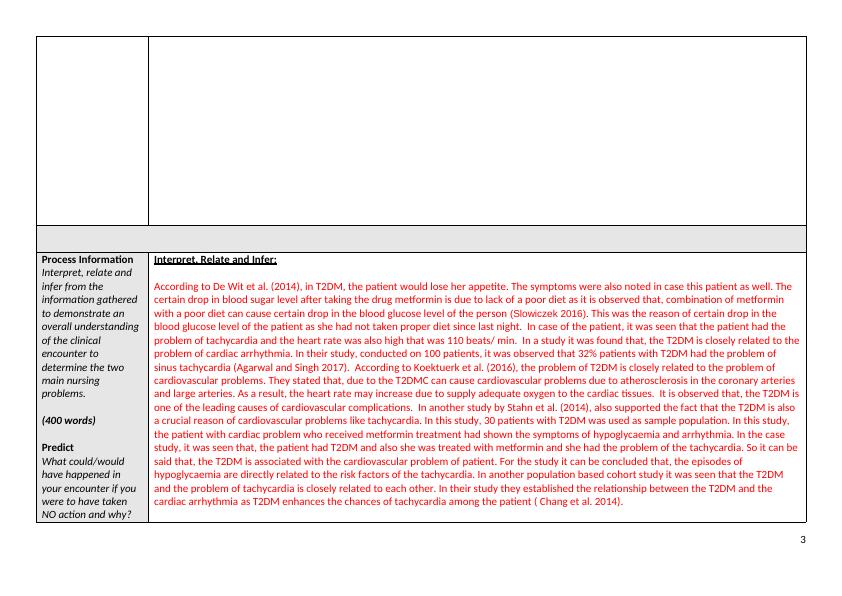Clinical Encounter Analysis: Hypoglycemia and Tachycardia
The assignment is a clinical encounter analysis that aims to assess the student's ability to think like a registered nurse using the clinical reasoning cycle as a framework. The student is required to choose a clinical encounter that highlighted the importance of thinking like a registered nurse and provide an overview of the encounter, review the key information available, gather new information, recall and apply existing knowledge, and determine the main nursing problems. The assignment is part of the practice consolidation portfolio of evidence for the course CNA344.
Added on 2023-04-21
About This Document
Clinical Encounter Analysis: Hypoglycemia and Tachycardia
The assignment is a clinical encounter analysis that aims to assess the student's ability to think like a registered nurse using the clinical reasoning cycle as a framework. The student is required to choose a clinical encounter that highlighted the importance of thinking like a registered nurse and provide an overview of the encounter, review the key information available, gather new information, recall and apply existing knowledge, and determine the main nursing problems. The assignment is part of the practice consolidation portfolio of evidence for the course CNA344.
Added on 2023-04-21
End of preview
Want to access all the pages? Upload your documents or become a member.



